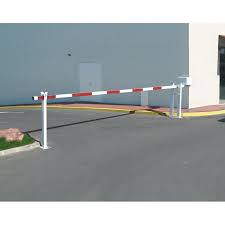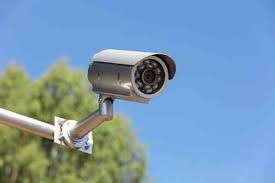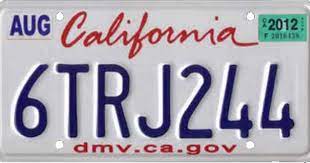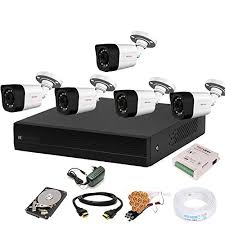Boom Barrier: Enhancing Security and Traffic Control
In today’s fast-paced world, ensuring safety and security has become a top priority for individuals, businesses, and organizations alike. One effective solution that has gained immense popularity is the boom barrier. A boom barrier is a physical security device used to control vehicular access and enhance traffic management in various settings such as parking lots, toll booths, residential complexes, commercial buildings, and industrial areas.
The primary purpose of a boom barrier is to regulate the entry and exit of vehicles by blocking or allowing access as required. It consists of a sturdy metal bar or arm that can be raised or lowered either manually or automatically. The barrier arm acts as a deterrent to unauthorized vehicles while providing controlled access to authorized ones.
One of the key advantages of using a boom barrier is its ability to enhance security. By restricting vehicle access to designated areas, it helps prevent unauthorized entry and ensures that only authorized personnel or vehicles are granted entry. This significantly reduces the risk of theft, vandalism, and other security breaches.
Moreover, boom barriers also play a crucial role in traffic control management. In busy areas such as parking lots or toll booths, they help maintain order by regulating the flow of vehicles. With the ability to raise and lower the barrier arm swiftly, it allows for efficient vehicle movement while preventing congestion and minimizing accidents.
Modern boom barriers are equipped with advanced features that further enhance their functionality. These include remote control operation, RFID (Radio Frequency Identification) technology for seamless access control, integrated sensors for detecting approaching vehicles, automatic number plate recognition (ANPR) systems for quick identification of registered vehicles, and even integration with centralized security systems for better monitoring.
Boom barriers come in various sizes and designs to cater to different requirements. They can be customized according to specific needs such as lengthening or shortening the barrier arm or adding additional safety features like LED lights or reflective tapes for better visibility during nighttime.
Installation and maintenance of boom barriers are relatively straightforward. They can be installed at entry or exit points with the help of professionals who ensure proper alignment, stability, and functionality. Regular maintenance checks are essential to ensure smooth operation and longevity of the barrier.
In conclusion, boom barriers offer an effective solution for enhancing security and traffic control in various environments. Their ability to regulate access, deter unauthorized vehicles, and facilitate efficient traffic management makes them a valuable asset for businesses, residential complexes, parking facilities, and other areas requiring controlled vehicular access. With their advanced features and customizable options, boom barriers continue to play a significant role in ensuring safety and convenience in our modern world.
5 Frequently Asked Questions About Boom Barriers: Everything You Need to Know
- What is a boom barrier?
- How does a boom barrier work?
- What are the advantages of using a boom barrier?
- What types of boom barriers are available?
- How much does a boom barrier cost?
What is a boom barrier?
A boom barrier is a physical security device used to control vehicular access and enhance traffic management. It consists of a sturdy metal bar or arm that can be raised or lowered either manually or automatically. The barrier arm acts as a deterrent to unauthorized vehicles while providing controlled access to authorized ones.
Boom barriers are commonly used in various settings such as parking lots, toll booths, residential complexes, commercial buildings, and industrial areas. They play a crucial role in regulating the entry and exit of vehicles, preventing unauthorized access, enhancing security, and maintaining traffic flow.
Modern boom barriers often come equipped with advanced features such as remote control operation, RFID technology for seamless access control, integrated sensors for detecting approaching vehicles, automatic number plate recognition (ANPR) systems for quick identification of registered vehicles, and integration with centralized security systems for better monitoring.
The installation and maintenance of boom barriers are relatively straightforward. They can be installed at entry or exit points with the help of professionals who ensure proper alignment, stability, and functionality. Regular maintenance checks are essential to ensure smooth operation and longevity of the barrier.
Overall, boom barriers provide an effective solution for controlling vehicular access and enhancing security in various environments. Their ability to regulate access and facilitate efficient traffic management makes them a valuable asset in ensuring safety and convenience.
How does a boom barrier work?
A boom barrier, also known as a boom gate or a parking gate, operates through a combination of mechanical and electronic components. Here’s how it typically works:
- Motor and Mechanism: The boom barrier is equipped with a motor that drives the movement of the barrier arm. The motor can be powered by electricity or hydraulic systems, depending on the design and specifications of the barrier.
- Control Panel: The control panel serves as the central command unit for operating the boom barrier. It houses various controls and settings that allow users to manage access and customize the barrier’s behavior.
- Barrier Arm: The barrier arm is typically made of sturdy metal and is attached to the motor mechanism. It acts as a physical barrier to control vehicle access. The length of the arm can vary depending on the specific requirements of the installation.
- Access Control Devices: Boom barriers are often integrated with access control devices to regulate entry and exit. These devices can include proximity cards, RFID tags, barcode scanners, or biometric systems like fingerprint readers or facial recognition technology.
- Sensors: Modern boom barriers are equipped with sensors that detect approaching vehicles or obstructions in their path. These sensors ensure safe operation by preventing the barrier from closing on vehicles or objects.
- Safety Features: To enhance safety, boom barriers are often equipped with additional features such as safety loops or photocells. Safety loops are embedded in the ground near the barrier and detect vehicles to prevent accidental closure while a vehicle is passing through. Photocells use infrared beams to detect obstacles in real-time, ensuring that the barrier stops or reverses if something is detected in its path.
- Control Signals: Boom barriers can be operated using various control signals such as push buttons, remote controls, keypads, or even integrated with access control systems for automated entry/exit based on authorized credentials.
When a vehicle approaches an entry point protected by a boom barrier, it needs to present valid credentials or trigger the access control system for the barrier to open. Once authorized, the barrier arm will automatically rise, allowing the vehicle to pass through. After a predetermined time or when the vehicle has cleared the area, the barrier arm will lower back into position, preventing unauthorized access.
In summary, a boom barrier operates by utilizing a motor-driven mechanism, an access control system, sensors, and safety features to regulate vehicle access and enhance security at entry and exit points. Its functionality can be customized based on specific requirements and integrated with various control devices for seamless operation.
What are the advantages of using a boom barrier?
Using a boom barrier offers several advantages, including:
- Enhanced Security: A boom barrier acts as a physical barrier, preventing unauthorized vehicles from accessing restricted areas. It helps deter potential intruders and ensures that only authorized personnel or vehicles are granted entry, thereby enhancing overall security.
- Access Control: Boom barriers provide controlled access to designated areas. They allow authorized vehicles to pass through while restricting entry to unauthorized ones. This helps maintain order and prevents unwanted vehicles from entering private premises or sensitive areas.
- Traffic Management: In busy areas such as parking lots, toll booths, or gated communities, boom barriers play a crucial role in traffic control management. By regulating the flow of vehicles, they help prevent congestion and ensure a smooth movement of traffic.
- Safety Measures: Boom barriers contribute to safety by preventing unauthorized access to hazardous areas or construction sites. They act as a physical barrier that keeps pedestrians and vehicles away from potentially dangerous zones, reducing the risk of accidents or injuries.
- Customizable Options: Boom barriers come in various sizes and designs, allowing for customization based on specific requirements. They can be tailored to fit different entrance widths or heights and can be equipped with additional safety features such as LED lights or reflective tapes for better visibility during nighttime.
- Integration with Security Systems: Modern boom barriers can be integrated with centralized security systems, such as CCTV cameras or access control systems. This enables seamless monitoring and recording of vehicle movements, providing an additional layer of security.
- Remote Control Operation: Many boom barriers are equipped with remote control functionality, allowing for convenient operation from a distance. This feature is particularly useful in situations where manual operation may not be feasible or when there is limited manpower available.
- Durability and Low Maintenance: Boom barriers are designed to withstand harsh weather conditions and heavy usage. They are built with sturdy materials that require minimal maintenance over time, making them a cost-effective solution in the long run.
Overall, using a boom barrier offers numerous advantages, including enhanced security, controlled access, efficient traffic management, and increased safety measures. With customizable options and integration capabilities, boom barriers provide a reliable solution for various industries and environments.
What types of boom barriers are available?
There are several types of boom barriers available in the market, each designed to cater to specific needs and requirements. Here are some common types:
- Manual Boom Barriers: These barriers are operated manually by a person on-site. They typically have a locking mechanism and require physical effort to raise or lower the barrier arm.
- Automatic Boom Barriers: These barriers are equipped with an automated system that allows for remote operation. They can be controlled using various methods such as remote control, access cards, or proximity sensors.
- Hydraulic Boom Barriers: Hydraulic boom barriers use hydraulic technology to raise and lower the barrier arm smoothly and quickly. They are known for their durability and ability to handle heavy-duty operations.
- Electromechanical Boom Barriers: Electromechanical boom barriers use an electric motor to control the movement of the barrier arm. They are known for their reliability, speed, and precise operation.
- Crash-Rated Boom Barriers: These heavy-duty barriers are designed to withstand high-impact collisions, making them suitable for high-security areas such as military installations, government buildings, or critical infrastructure sites.
- Anti-Terrorist Boom Barriers: These specialized boom barriers offer enhanced security features such as anti-ramming capabilities, reinforced materials, and crash-resistant designs to protect against potential terrorist attacks or unauthorized vehicle intrusion.
- Parking Barrier Gates: These boom barriers are specifically designed for parking facilities and help manage entry and exit points efficiently. They often include features like ticketing systems or integrated payment solutions.
- Folding Boom Barriers: Folding boom barriers consist of multiple sections that fold upon themselves when not in use, allowing for compact storage and easy deployment when needed.
- Telescopic Boom Barriers: Telescopic boom barriers have multiple sections that extend outward when activated, providing a wider coverage area while maintaining a compact size when retracted.
- Solar-Powered Boom Barriers: These environmentally-friendly boom barriers are equipped with solar panels to generate power, reducing reliance on traditional electricity sources and ensuring uninterrupted operation even during power outages.
It’s important to consider factors such as location, traffic volume, security requirements, and budget when choosing the appropriate type of boom barrier for a specific application. Consulting with professionals or suppliers in the industry can help determine the most suitable option for your needs.
How much does a boom barrier cost?
The cost of a boom barrier can vary depending on several factors such as the brand, quality, features, size, and installation requirements. Generally, boom barriers are available in a wide price range to cater to different budgets and needs.
Basic manual boom barriers with standard features and a shorter arm length typically start from around INR 20,000 to INR 50,000. These are suitable for smaller parking lots or low-traffic areas where manual operation is feasible.
For automated boom barriers with advanced features like remote control operation, RFID technology, ANPR systems, and longer arm lengths, the price range can be between INR 50,000 to INR 2 lakhs or more. The cost may increase based on additional customization options and specific requirements.
It’s important to note that the cost of a boom barrier is not limited to the initial purchase price. Other factors such as installation charges, maintenance costs, and any additional accessories or peripherals required should also be considered when budgeting for a boom barrier system.
To get an accurate cost estimate for a boom barrier tailored to your specific needs and location, it is recommended to consult with reputable suppliers or manufacturers who can provide detailed quotations based on your requirements.




